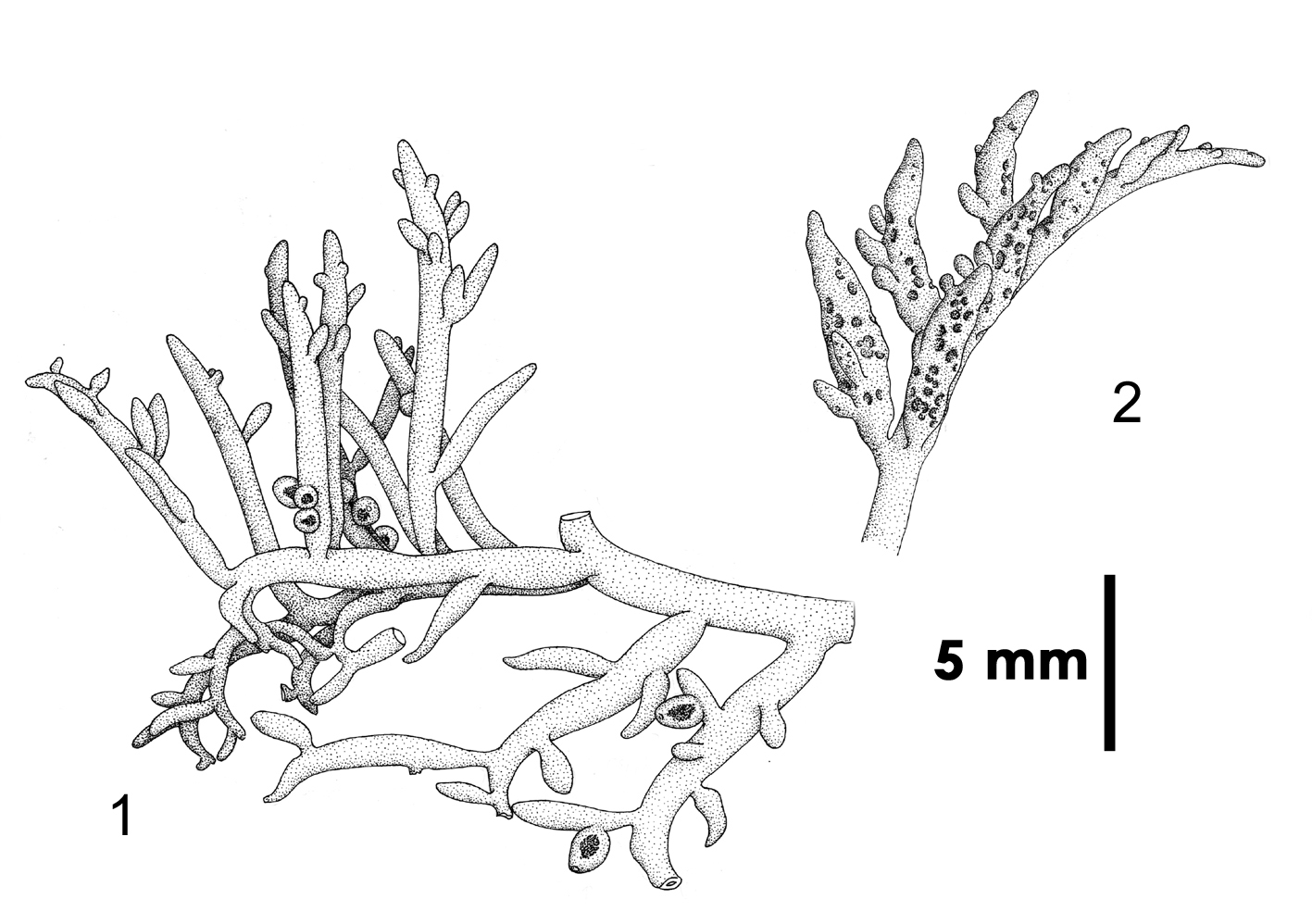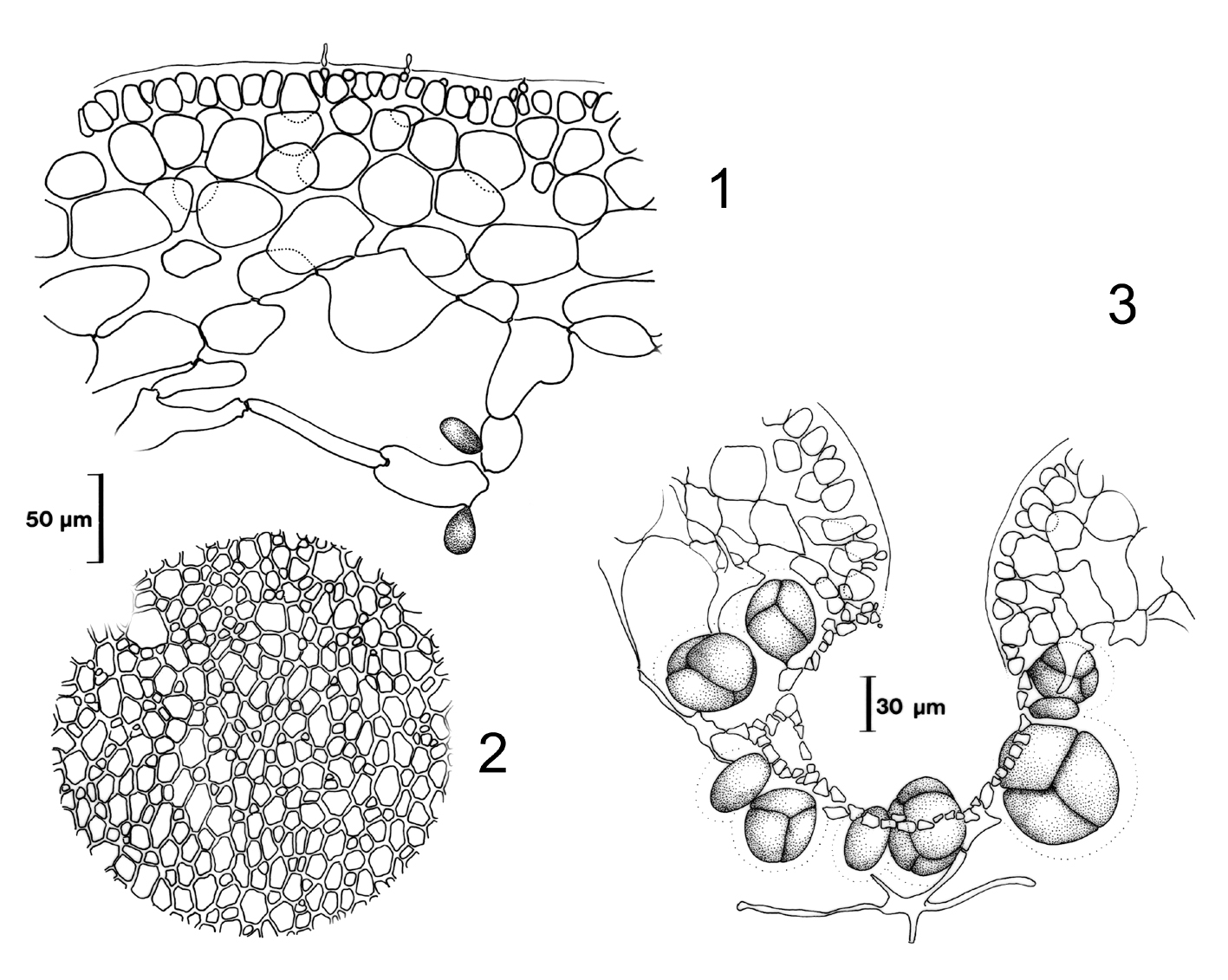Seaweeds of the South African South Coast


Order Rhodymeniales
Family Lomentariaceae
Lomentaria diffusa Stegenga, Bolton & Anderson 1997: 373-374, plate 138
Plants bright red, forming dense turfy clumps, up to several cm in height and diameter, consisting of interwoven branching prostrate and erect axes. Axes terete, hollow, constrictions and septa present only at bases of lateral branches; branching irregular or in well-developed erect axes with lateral in double row on outside of the curved main axis; axes to 1.5 mm in diameter. Structure of axis walls comprising about 5 layers of pseudoparenchymatous cells, cells of outer layer smallest, becoming progressively larger to the inside; medulla of a network of filamentous cells, some bearing spherical to ovate gland cells. Tetrasporangia in sori lining deep depressions in thallus wall, projecting into central cavity, globose to slightly ovate, up to about 70 µm diameter, tetrahedrally divided. Cystocarps ovate to urn-shaped, projecting from thallus surface, ostiolate.
Collections, ecology and regional distribution
Recorded from Langebaan Lagoon on the west coast to Tsitsikamma (12-32). Epilithic or epiphytic in the sublittoral fringe.
World distribution: South African endemic.
Type locality: Kraalbaai, Langebaaan Lagoon (Stegenga et al. 1997).

Lomentaria diffusa, 1. Habit, with cystocarps. 2. Tetrasporiferous branch. Reproduced from Stegenga et al. (1997).

Lomentaria diffusa, 1. Cross section. 2. Surface view. 3. Tetrasporangial sorus in cross section. Reproduced from Stegenga et al. (1997).
References Lomentaria diffusa
Stegenga, H., Bolton, J.J. & R. J. Anderson. 1997. Seaweeds of the South African west coast. Contributions from the Bolus Herbarium 18: 655 pp.
Cite this record as:
Anderson RJ, Stegenga H, Bolton JJ. 2016. Seaweeds of the South African South Coast.
World Wide Web electronic publication, University of Cape Town, http://southafrseaweeds.uct.ac.za; Accessed on 07 January 2026.